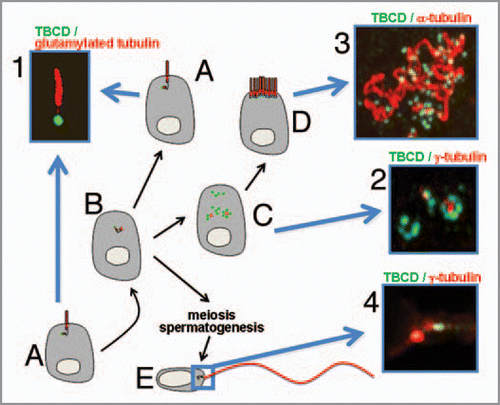Figures & data
Figure 1 (A) Typical cell in G0/G1 exhibiting a primary, also known as a solitary, cilium. (1) These structures,Citation22–Citation24 which typically label with antibodies recognizing glutamylated tubulin (red), arise from a basal body that, as this image shows, contains abundant TBCD (in green). (B) Cells, both undergoing mitosis and differentiating into multiciliated cells, must assemble new centrioles. (C) Cells differentiating into multiciliated cells (such as ependymal cells) disassemble their primary cilium prior to undergoing massive procentriole assembly. This phenomenon is achieved by a mechanism whereby several daughter procentrioles containing abundant TBCD (2, green) are simultaneously nucleated from a mother centriole containing γ-tubulin (2, in red). (D) Assembled centrioles next migrate to the apical cell surface where they become basal bodies of cilia (3). As is the case for a primary cilium, a single TBCD structure (green) is also situated at the base of each motile cilium. (E) TBCD is also localized at the centrioles of the base of the flagellum in human spermatozoa (4).
